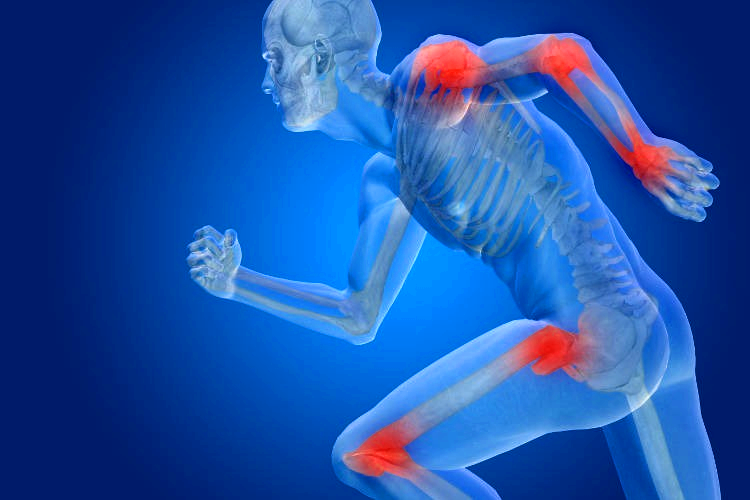Joint pain is a common and often debilitating condition that affects individuals across all age groups. This article will explore the various facets o
Joint pain is a common and often debilitating condition that affects individuals across all age groups. This article will explore the various facets of joint pain, including its causes, symptoms, and effective remedies. We’ll also provide evidence-based insights on how to manage and alleviate this condition.
Understanding the Anatomy of Joints
Before diving into the causes of joint pain, it’s crucial to understand the basic anatomy of joints. Joints are the connections between bones, allowing for movement and flexibility in our bodies. The structure of joints plays a significant role in the development of joint pain.
Common Causes of Joint Pain
1. Arthritis
Arthritis is a leading cause of joint pain. It’s an inflammatory condition that affects the joints, leading to discomfort and limited mobility. Osteoarthritis, the most prevalent form, is often linked to aging, wear and tear on the joints, and genetics. Rheumatoid arthritis, an autoimmune disorder, is another common form.
2. Injuries and Trauma
Injuries and trauma to the joints are frequent contributors to joint pain. These injuries can occur due to accidents, sports-related incidents, or any form of physical trauma. Timely treatment and rehabilitation are essential to prevent long-term complications.
3. Overuse
Overuse of joints, particularly in activities that involve repetitive motions, can result in joint pain. This frequently affects athletes, factory workers, and individuals with physically demanding occupations.
4. Infections
Infections can also lead to joint pain and conditions like septic arthritis. Promptly identifying and treating the underlying infection is crucial in such cases. Infections can stem from bacteria, viruses, or fungi.
To delve deeper into the causes of joint pain and to learn more about these conditions, you can refer to reputable sources like the Arthritis Foundation and the Centers for Disease Control and Prevention (CDC).
Recognizing the Symptoms
Recognizing the symptoms of joint pain is the first step in effectively addressing this often debilitating condition. Joint pain can manifest in various ways, and understanding these symptoms can help individuals seek timely medical intervention and relief. Here, we will delve into the common signs and manifestations of joint pain, providing detailed insights on what to look for:
1. Pain
Pain is the primary and most noticeable symptom of joint issues. It can vary in intensity, ranging from mild discomfort to excruciating pain that severely hampers one’s quality of life. The character of the pain can also differ, with descriptions such as dull, aching, sharp, or throbbing. The pain may be localized to a specific joint or radiate to nearby areas. It frequently gets worse with movement or weight-bearing activities and can get worse after extended periods of rest.
2. Swelling

Swelling in and around the affected joint is another hallmark of joint problems. This swelling can make the joint appear larger than usual and feel tender to the touch. The extent of swelling may vary, from barely noticeable to pronounced puffiness. It is a result of the accumulation of fluid and inflammatory cells in the joint space. Swelling can hinder joint function and contribute to discomfort
3. Stiffness
Joint stiffness is a common symptom that can lead to a reduced range of motion. Affected individuals may find it challenging to perform everyday activities like bending, walking, or even getting out of bed in the morning. Stiffness is typically most pronounced after periods of inactivity, such as waking up or sitting for an extended period. It can ease with movement but often returns after rest.
4. Redness and Warmth
In some cases of joint inflammation, the affected joint may appear red and feel warm to the touch. This is due to increased blood flow to the area and is more commonly associated with inflammatory conditions like rheumatoid arthritis. The presence of redness and warmth can be an indicator of an underlying autoimmune or inflammatory joint disorder.
5. Crepitus
Crepitus is a less common but distinctive symptom characterized by a crackling or popping sensation when moving the joint. An audible sound may accompany it. Crepitus is often associated with joint conditions such as osteoarthritis, where the surfaces of the common become irregular and may rub against each other.
6. Limited Function
One of the most profound effects of joint pain is the limitation it imposes on the affected individual’s ability to perform regular activities. Everyday tasks like climbing stairs, gripping objects, or even dressing oneself can become challenging. This functional limitation can significantly impact one’s quality of life, leading to reduced independence and overall well-being.
Effective Remedies
1. Medications
Over-the-counter pain relievers, nonsteroidal anti-inflammatory drugs (NSAIDs), and prescription medications are frequently used to manage joint pain caused by various conditions. These medications can help reduce inflammation and alleviate pain. However, it’s essential to use them under the guidance of a healthcare professional.
Top Medicine for Joint Pain
The top 5 medicines commonly used to alleviate joint pain are:
- Ibuprofen: Ibuprofen is a nonsteroidal anti-inflammatory drug (NSAID) available over the counter. It works by reducing pain, inflammation, and fever. For joint pain, it is often recommended for conditions such as osteoarthritis and rheumatoid arthritis. However, it’s important to follow the recommended dosage and consult a healthcare professional if you have any underlying health concerns, as long-term use can have side effects, including stomach issues.
- Naproxen: Similar to ibuprofen, naproxen is another NSAID that can be purchased without a prescription. It is commonly used to manage joint pain, particularly in cases of arthritis. Like ibuprofen, it should be used as directed, and any concerns or side effects should be discussed with a healthcare provider.
- Acetaminophen: Acetaminophen, also known as paracetamol, is an over-the-counter pain reliever that can help with mild joint pain. It is less effective at reducing inflammation compared to NSAIDs but is generally gentler on the stomach. It is often recommended for individuals who cannot tolerate NSAIDs or have mild joint discomfort.
- Corticosteroids: Corticosteroids are prescription medications that can be administered orally or by injection. They are potent anti-inflammatory drugs and are used for managing severe joint pain, particularly in cases of autoimmune conditions like rheumatoid arthritis. However, they come with potential side effects, so healthcare professionals closely monitor their use.
- Disease-Modifying Antirheumatic Drugs (DMARDs): DMARDs are a group of prescription drugs that are mostly used to treat rheumatoid arthritis and other autoimmune joint conditions. These drugs work by modifying the course of the disease, reducing inflammation, and slowing joint damage. Common DMARDs include methotrexate and sulfasalazine, among others. Rheumatologists or other specialists frequently prescribe and monitor DMARDs.
2. Physical Therapy
Physical therapy is a valuable tool for improving joint flexibility, strength, and overall functionality. Skilled therapists can create personalized exercise routines to address specific joint issues.
Read: Joint Mobility Exercises: Enhancing Your Flexibility and Reducing Discomfort
3. Lifestyle Changes
Maintaining a healthy weight, engaging in regular physical activity, and following a balanced diet can help reduce joint pain and improve overall joint health. Avoiding excessive strain on the joints is crucial to preventing future discomfort.
4. Natural Supplements
Certain natural supplements, such as glucosamine and chondroitin, have gained popularity for their potential to reduce joint pain and promote joint health. However, it’s important to consult with a healthcare professional before incorporating them into your regimen.
For comprehensive and research-backed information on joint pain remedies, consider consulting organizations like the American College of Rheumatology and the National Institute of Arthritis and Musculoskeletal and Skin Diseases (NIAMS).
Conclusion
Joint pain is a challenging condition that can significantly impact one’s quality of life. By understanding the causes, recognizing the symptoms, and exploring various remedies, individuals can take steps to manage and alleviate joint pain. It’s important to consult with healthcare professionals for a personalized approach to joint pain management.
Frequently Asked Questions
Can joint pain be prevented?
While some causes of joint pain are not preventable, maintaining a healthy lifestyle, including regular exercise and a balanced diet, can help reduce the risk of joint problems.
Is joint pain always a sign of a more severe condition?
Joint pain can be a symptom of various underlying conditions, but it doesn’t always indicate a severe issue. Consult a healthcare professional for a proper diagnosis.
How long does it take to see improvements with joint pain remedies?
The timeline for improvement varies depending on the underlying cause and the selected treatment. Follow your healthcare provider’s guidance for the best results.
Are there specific diets that can help with joint pain?
Some diets, like the Mediterranean diet, are known for their anti-inflammatory properties and can potentially benefit joint health.
Are all joint pain remedies safe for everyone?
Not all remedies are suitable for every individual. Consult a healthcare professional to determine the best approach for your specific situation.


COMMENTS